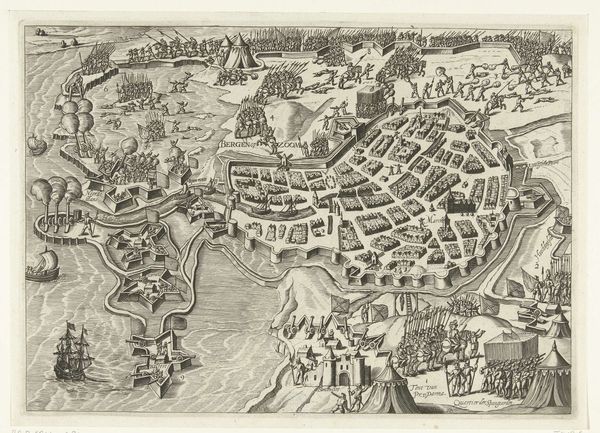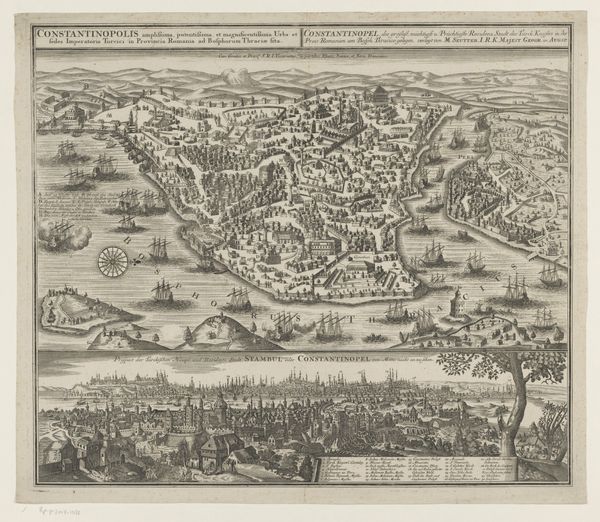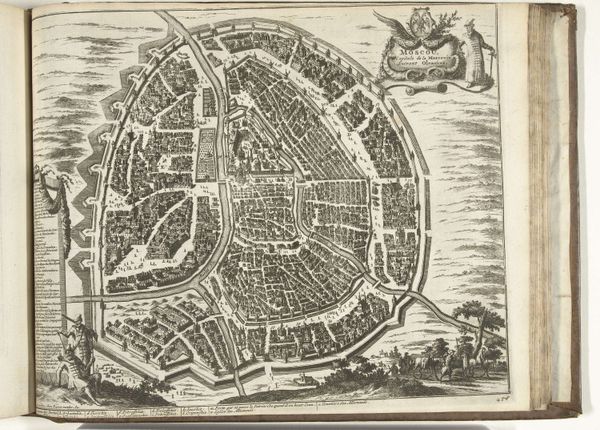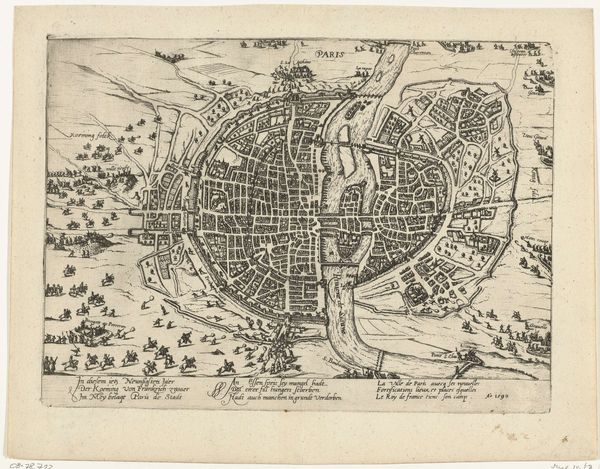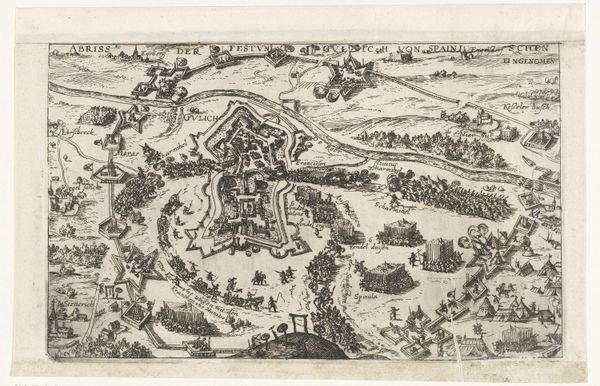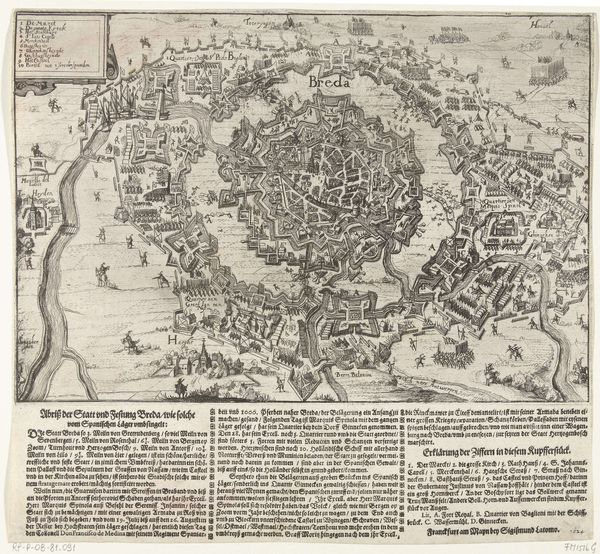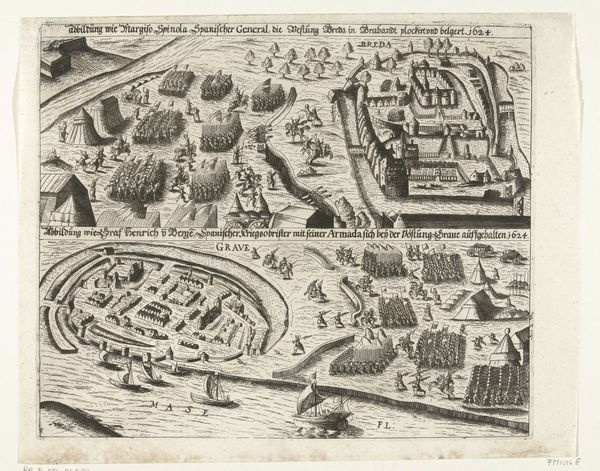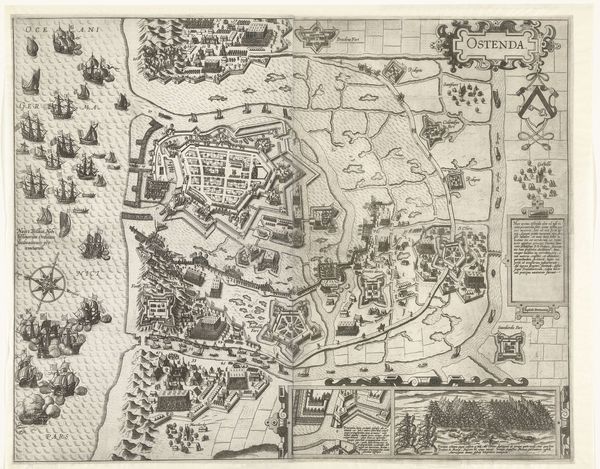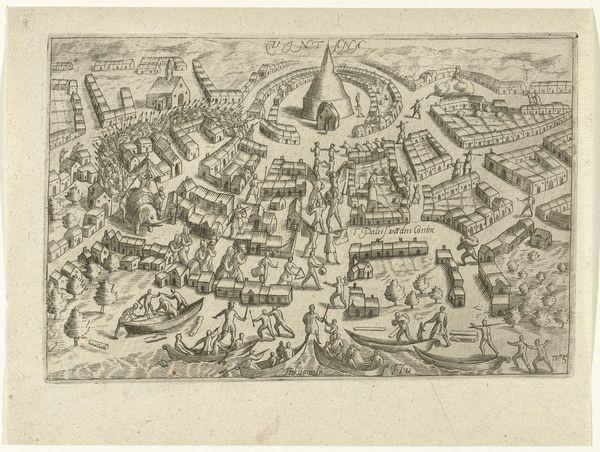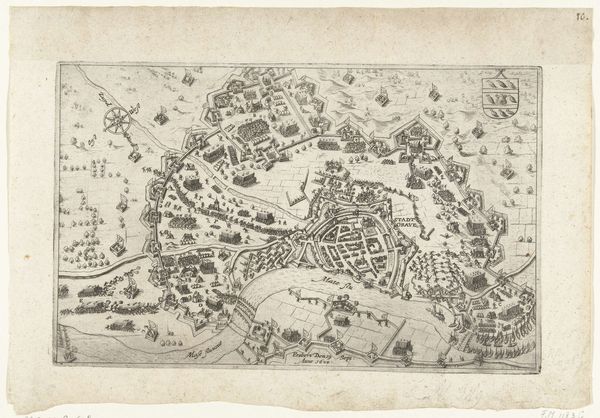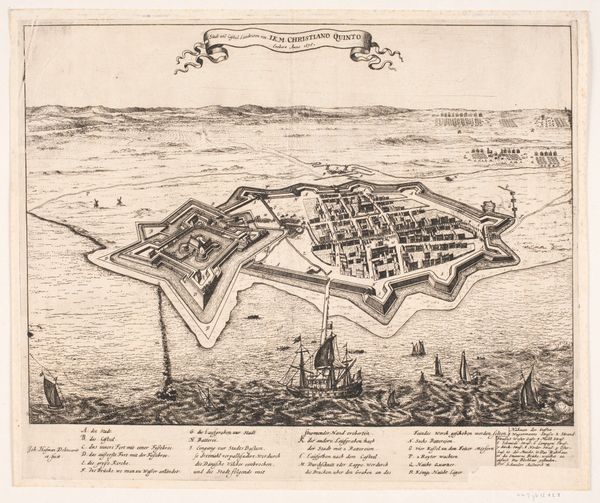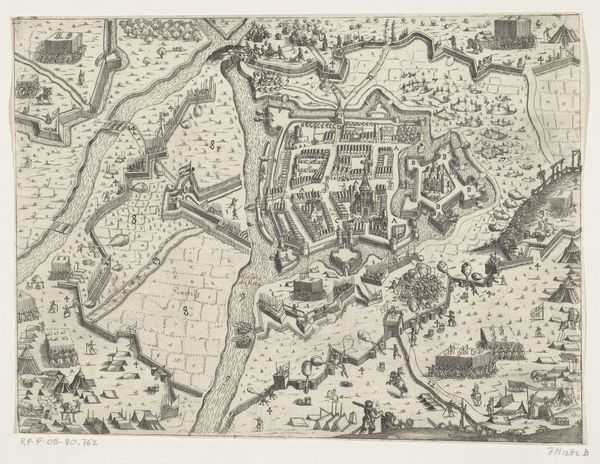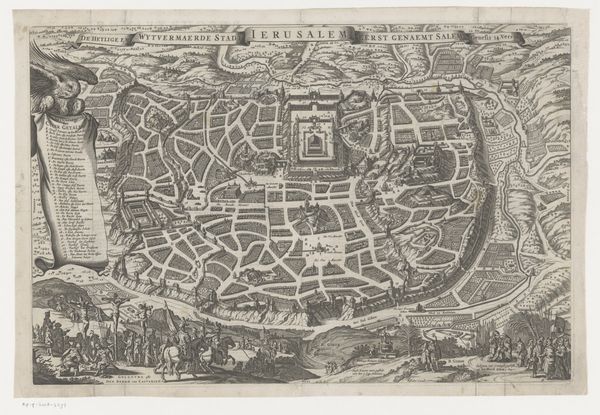
drawing, print, ink, engraving
#
drawing
#
baroque
#
pen drawing
# print
#
old engraving style
#
landscape
#
ink
#
line
#
cityscape
#
history-painting
#
engraving
#
realism
Dimensions: height 226 mm, width 336 mm
Copyright: Rijks Museum: Open Domain
Editor: This print, "The Siege of Breda, 1624-1625," is such an amazing visual document of the time. All these little figures enacting battle, almost like miniatures arranged for observation, it feels… calculated, but in an exciting way. How should we interpret this piece? Curator: Observe how the city is laid out—almost star-shaped, wouldn’t you say? It’s like a mandala of war. This reflects the advanced military engineering of the time but also suggests a belief in the power of geometric forms to impose order, even in chaotic times. Editor: I hadn’t thought about it that way. What about all those little figures? Curator: Those figures carry cultural weight. Each one, though small, represents individuals caught in larger events. The print functions as both a historical record and a meditation on human action within historical landscapes. Notice how the engraver rendered the fortifications; it symbolizes strength but also evokes vulnerability. It's a fascinating psychological space, don’t you think? Editor: Definitely. It feels almost paradoxical – meticulously created chaos. Curator: Exactly. What symbols resonate with you most strongly? Do any of those miniature soldiers evoke an emotion, a narrative? Editor: For me, it's the lines radiating from the city center. They seem to represent power, yet their fineness suggests a fragile grip. Thanks for highlighting the details; this helps me really grasp the impact. Curator: Understanding how symbols operated in the collective psyche is essential. What do you believe the piece communicates now that it wouldn’t have when it was created?
Comments
No comments
Be the first to comment and join the conversation on the ultimate creative platform.
